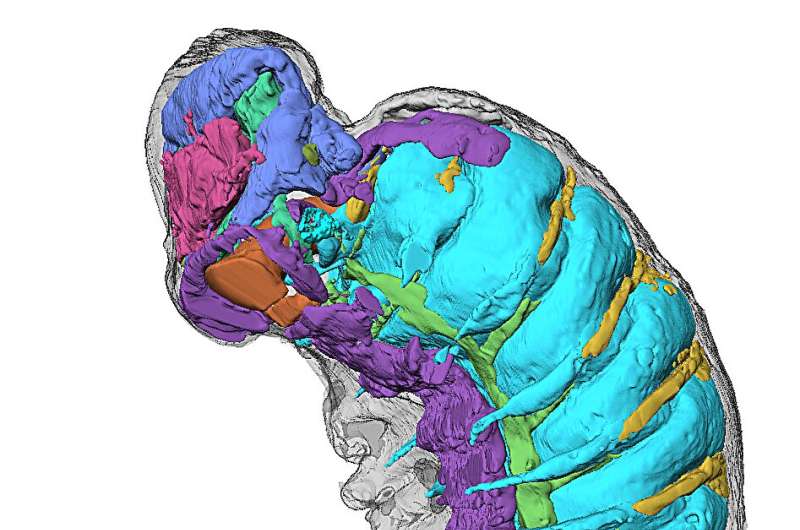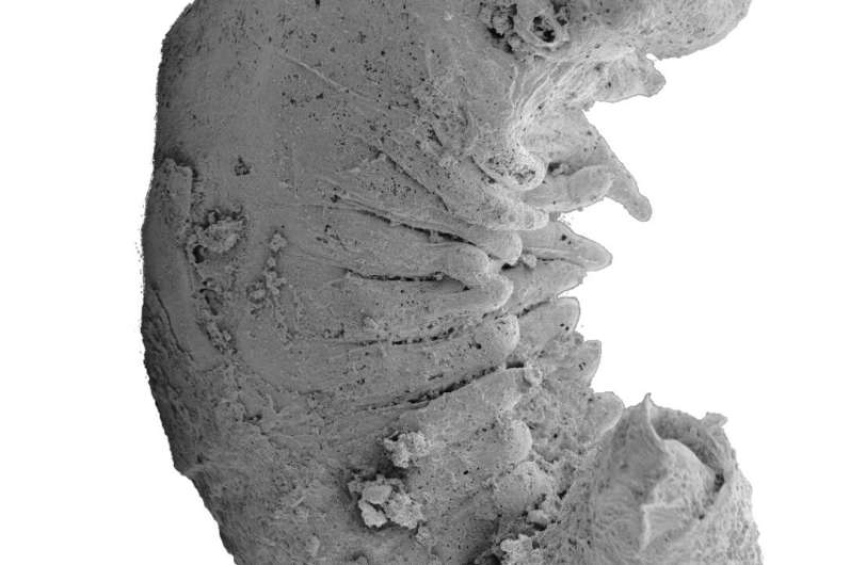Newly-discovered Cambrian-era larva reveals evolution of insects, spiders, and crabs
In a study titled “Organ systems of a Cambrian euarthropod larva,” published in Nature, scientists from Durham University have revealed an exceptionally well-preserved larval fossil, named Youti yuanshi, that offers an unprecedented look inside one of the earliest known arthropod ancestors.
The fossil, no larger than a poppy seed, belongs to the group known as euarthropods, which includes modern insects, arachnids, crustaceans, and centipedes. What makes Youti yuanshi extraordinary is the exceptional preservation of its internal organs — an extremely rare occurrence, especially in such tiny and delicate creatures.
More to read:
First complex organisms appeared 2.1 billion years ago
Using synchrotron X-ray tomography at the UK’s Diamond Light Source facility, researchers created high-resolution 3D images of the larva’s inner structures. These include miniature brain regions, digestive glands, a rudimentary circulatory system, and even traces of nerves connected to its eyes and legs.
This glimpse inside a Cambrian-era organism reveals that early arthropod relatives were more anatomically advanced than previously believed.
“When I used to daydream about the one fossil I’d most like to find, it was always an arthropod larva,” said Dr. Martin Smith, lead author and paleobiologist at Durham University.

“But because larvae are so small and fragile, I thought finding one fossilized would be impossible. When we uncovered the internal structures, I was stunned—how could such intricate features survive for over half a billion years?”
The larva offers crucial insights into how simple, worm-like organisms evolved into the complex arthropods we see today. It even shows an early version of the protocerebrum — a primitive brain region that later evolved into the specialized heads of modern arthropods, complete with antennae, eyes, and mouthparts.
This key adaptation helped arthropods diversify and dominate Cambrian marine ecosystems.
More to read:
Scientists announced the start of a new epoch in Earth’s history
The fossil provides an essential piece in the puzzle of how arthropods developed their characteristic segmented bodies, specialized limbs, and nervous systems. It also helps explain their incredible evolutionary success and why they remain the most abundant group of animals on Earth today.
Discovered in China and now housed at Yunnan University, this remarkable fossil bridges a major gap in understanding how the arthropod body plan emerged during the Cambrian Explosion — one of the most significant periods in the history of life on Earth.
More to read:
Fossilized poop unlocks secrets of dinosaurs’ rise to supremacy







